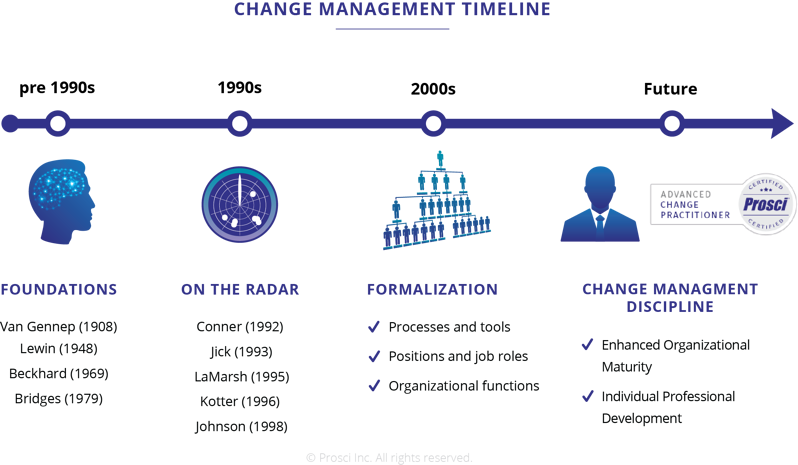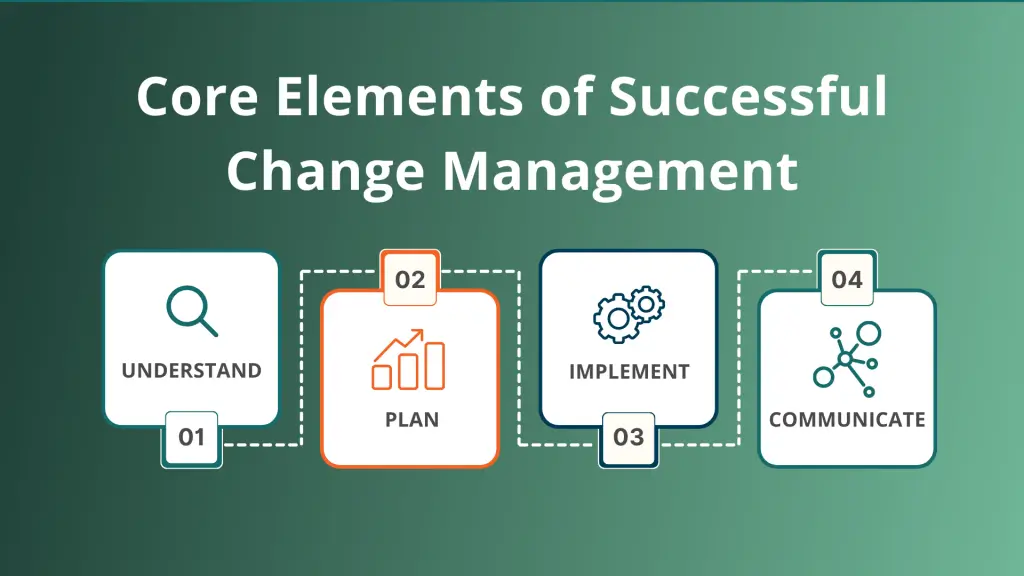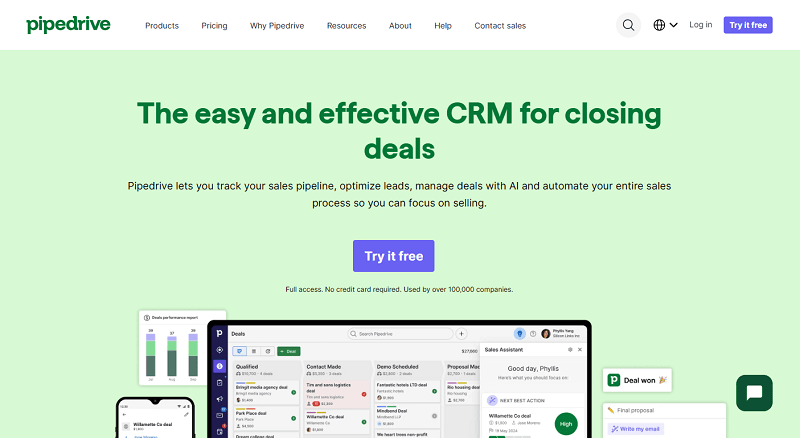Isn’t it ironic that we all want to progress, but no one wants to change? Even the faintest idea of change is usually greeted by resistance and rejection. To make the change process seamless and acceptable, you need to start by administrating change management the right way. Not just during CRM implementation but as an element of your corporate culture.
The prospect of adopting a new customer relationship management system in an organization usually comes with many uncertainties and fears, especially from the system’s end-users. And when not properly curtailed, these fears could lead to CRM implementation failure and user complacency.
In this guide, you’ll learn about change management and the best practices of CRM change management. Without further ado, let’s dive in.
What is CRM Change Management
CRM change management is about smoothly transitioning from one CRM system to another. It’s more about people management than system management. All key stakeholders and end-users need to commit to the CRM to deliver to full capacity in order for it to work. Change management is an integral part of a CRM system’s success.
History of Change Management
The concept of change management was popularized in the early 1990s. At that time, the focus of change management was bent on improving the collective understanding, reactions, and response to change of the people. So, this era was characterized by research and findings of change and phycology.
On the radar phase, the concept of change management begins to gain wide acceptance and adoption by academicians and research bodies. Then, it was later introduced into the business environment as a tool for driving organization-wide change and transformation.
Change management was officially recognized as a discipline during the Formalization phase. In addition, businesses seeking to transition to a new system or business tool began to hire the services of change management consultants to ensure a smooth transition and an organization-wide buy-in.
The future hold lots of potential for the discipline of change management. Among which are more organizational adoption, individual professional development and global recognition.

CRM Change Management Best Practices
Changes are usually not palatable, especially when switching from one software to another. CRMs have a slightly higher learning curve than most other business tools, making it dreadful for most non-technical employees.
Now, we’ll be looking at some CRM change management best practices through the lenses of Kotter’s eight-step change model. John Kotter is a seasoned Leadership and Change Management professor at Harvard Business School, and he formulated an 8-step change model in his book Leading Change.
Keep reading to discover how to do CRM change management the right way using the powerful Kotter’s change management model.
Editor's Choice: 40 CRM Statistics Every Business Should Know in 2022
Kotter’s 8 Step Change Management Model
- Create a sense of urgency
- Create a guiding coalition
- Create a vision for change
- Communicate the vision
- Remove obstacles
- Create short term wins
- Consolidate improvements
- Create the changes

1. Create a Sense of Urgency
Generally speaking, people tend to respond faster to a course when there’s a consequence for not taking immediate action. But when there’s no consequence, they tend to be lazy about it. Creating a sense of urgency around your new CRM system is the first step towards ensuring the success of your CRM.
Here’s how it works, add a consequence for not taking immediate action to the CRM to get your team’s undivided attention. For instance, you can say the new CRM will help them meet their sales target to get their attention because they know the consequence of not meeting their targets.
The bottom line is to get them to see the need to jump on the new CRM system quickly. Once they properly grasp the need for it, motivation becomes natural.
2. Create a guiding coalition
The truth is CRM change management cannot be done entirely by one person, no matter your position. At some point, you’ll need the support and cooperation of others to see through with the change. Therefore, it is crucial to building a guiding and powerful coalition with other stakeholders within your organization.
One way of building a coalition within your organization is to seek contributions from your subordinates and superiors. Research has shown that when people are involved in decision-making, they tend to support it. But if they’re not interested, they’ll not see it as their responsibility.
So, create a CRM change management committee within your organization representing all key stakeholders and make them responsible for leading the CRM adoption. By this, you’re getting their inputs and commitment to the CRM.
3. Create a vision for change
Any change initiative without a solid idea, goal or vision is prone to failure. It’s not rocket science; people won’t automatically buy into a new CRM that doesn’t offer more than their existing CRM system. There needs to be something compelling about the new system.
It all boils down to creating a vision for the CRM change. Let them have a reason to whether the storms and see to the success of the CRM system. Create a vision so strong that it pulls everyone to work.
Editor's Choice: 6 Best CRM for Small Consulting Business (Free & Paid)
4. Communicate the vision
George Bernard Shaw said, and I quote, “The single biggest problem in communication is the illusion that it has taken place.” Creating a vision without effectively communicating is no different from having no vision. And a bigger problem is assuming that you have shared the vision while you’ve not.
After creating the vision, the next step is to communicate it properly and ensure that it is understood and internalized by your team members. To achieve this, you can paste the vision on the company’s strategic areas and have your team member recite it till it becomes part of them.
5. Remove Obstacles
CRM change already comes with lots of resentment and restraint from the end-users, and any slight obstacle might be their excuse for non-performance. I can almost hear you thinking about the possibility of eliminating every barrier beforehand.
The solution is to identify all possible obstacles before even initiating the CRM Change Management, and eliminate it. Now, grab a pen and paper, list out all the potential barriers, and develop possible solutions that’ll counter them. By removing all frictions to implementing the CRM, you’re setting you and your team up for success.
6. Create short-term wins
One way to sustain your team’s motivation throughout the CRM Change process is to create short-term wins. No matter how small, let it be that the end-users can achieve a milestone with the CRM system. It’ll boost their morale and activate more energy in them to do even more.
The task might be as little as importing contacts from their existing CRM or linking the company’s social media profiles to the CRM; get the point? Something achievable that’ll boost their confidence in the CRM system.
7. Consolidate Improvements
Kotter argues that it is important to sustain a change long after its achievement. Change management does not stop after successfully transitioning to a new phase, and most people get it wrong. The change needs to be sustained if it will make a lasting impact.
You need to create a system for consolidating improvements in the CRM system. Something like a monthly, quarterly, and yearly goal for your CRM will go a long way in sustaining the commitment of the end-users to the system.
Editor's Choice: Apple CRM Case Study: The Secret Behind Apple’s Tremendous Growth
8. Create the changes
Here, the focus is on instilling the change into the organization’s corporate culture. Not just a one-time event, but something that becomes entrenched in the organization’s culture. To enable new and existing employees to run with it easily.
In Conclusion
According to a report by Harvard Business Review, an average of 30% of CRM projects don’t succeed. Why? Because most of them are neither doing CRM change management the wrong way nor are not doing it at all.
Fortunately, you won’t add to that statistics because you’re informed on doing it the right way. CRM change management is the key to a successful CRM implementation and use, try it and see the magic it does.
If you have questions, contributions, and suggestions, kindly share them in the comment. We’d love to hear from you.






























